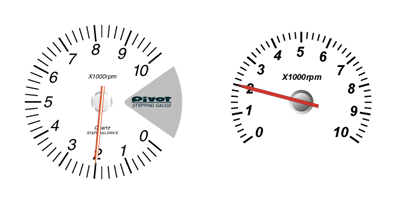Drivers demand that tachometers exhibit linearity and have quick response to change. If the response is slow to the actual rpm, the timing loss will be reflected in display mistakes. For example: You made shift change at 8000rpm but the actual rpm was 9000rpm.
If the linearity is poor the tachometer cannot grasp rises in actual rpm. For example, a rise in rpm of 5000 may feel incorrect but you cannot be sure if it is the engine or the meter. The unreliability of standard meters used in motor sports stems form these problems.
|
 |